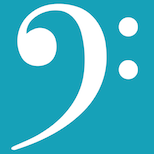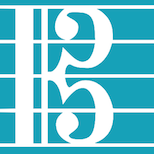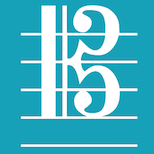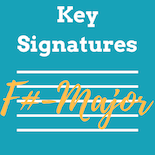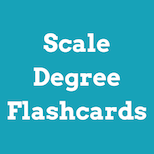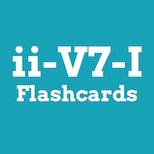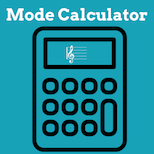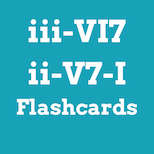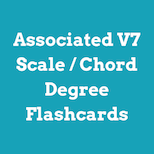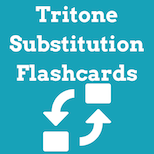If you resize your browser you may need to refresh this page.
Click a button to generate a random chord progression:
New! Free Music Note Reading Games:
Looking for a good music theory book? Check out our Amazon list here: Best Music Theory Books.
Introduction
The concept for this page comes from my "Improv II" teacher at the University of North Texas, Professor Mike Steinel. One of my many takeaways from this class is the use of random root progressions. I continue to use them in my own practice sessions and encourage my own students to do the same. Below, I'll illustrate a few of the many useful and fun ways to incorporate this powerful concept into your own practice sessions.
Scales and Patterns
One of the most obvious ways of utilizing random root progressions is to use it as a way of practicing scales and patterns. No matter the key, style, or tempo, you can use the random root progression to add variety to rote memorization tasks such as learning scales, licks, or patterns in all twelve keys. For example, I normally learn something by first "going around the circle" and then maybe ascending and descending chromatically. But after a while even that can be boring, plus it can potentially put you in a rut where you can only play the scale/pattern correctly when it is preceded by a specific key or when you're playing them in a sequence. The random root progression can help with both of these issues by forcing you to use an unpredictable progression. For example, let's take this four bar progression that the random root progression generator just displayed for me:

Now, let's say that I've been working on my augmented scales for a couple weeks, and that my usual ways of practicing them have been getting a bit stale, but I don't quite feel like I'm ready to move on to another topic. This is the perfect time to utilize random root progressions. Here is an example of using a random root progression for this purpose:

NOTE: In reality, I would ignore the bar lines and possibly time signature (but not tempo!) in order to play the scales over the full range of my saxophone. Therefore, it would actually look something like this:

Random Progressions for Improvising or Composition
Another opportunity to take advantage of the "random" in random root progressions is to practice improvising on them. Here is an example of me trying to do just that on the same chord progression (assuming everything is major).

A variation on this would be to change the chord qualities in the moment. For example, when playing this progression I may want to make the "G" chord a "Gmin7", and turn the "Ab" into "Ab7" and "E" into "E7." However, I think the Random Chord Progression button makes for better practice should you choose to use it this way. Try it out by clicking on the "Random Chord Progression" button above.
As tonal centers
The biggest benefit of random root progressions, rather than random chord progressions or random *insert chord quality here* progressions, is that the letter name you see doesn't have to be the letter name you play over.
Instead of seeing two beats of D, Ab, B, Bb, and so on, you could treat them as tonal centers, or even as a specific part of a tonality, rather than an actual chord change -- kind of like playing on a modal tune.
Here is how I would view this same progression if I were working on ii-V7s and treating the "D, Ab, B, etc." as roots:

Finally, here is an example seeing the letter name as a part of the tonality - not just the root. In this case we're going to make the letter name the V7 of a ii-V7-I.

Seeing chord changes as representative of the entire tonal world to which it belongs rather than just the four notes it implies is a powerful way of expanding your improvisational palette.
Thanks for reading! I hope this spurs some fun ideas for future practice sessions. Be sure to check out these other useful tools at music-theory-practice.com:

